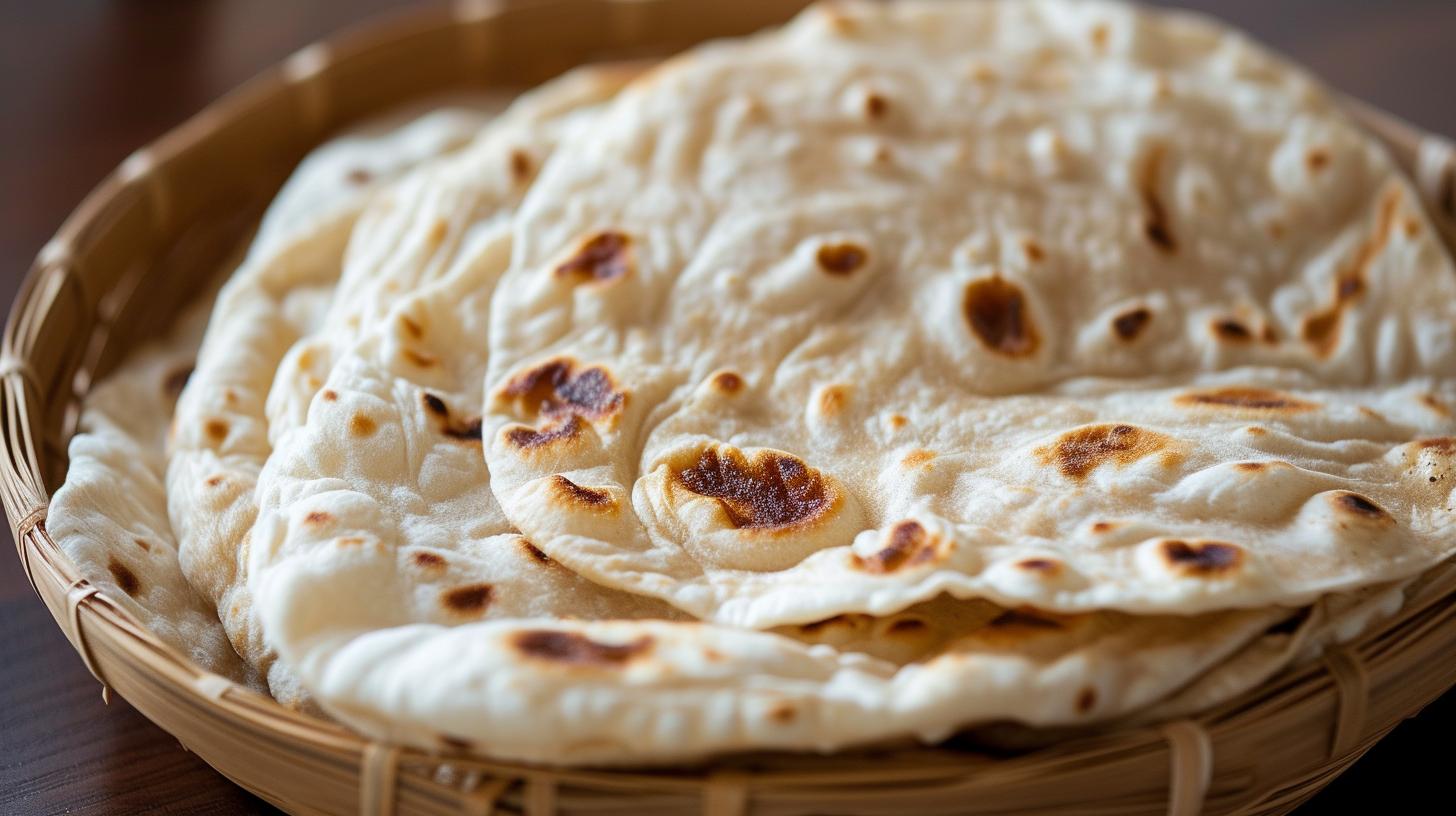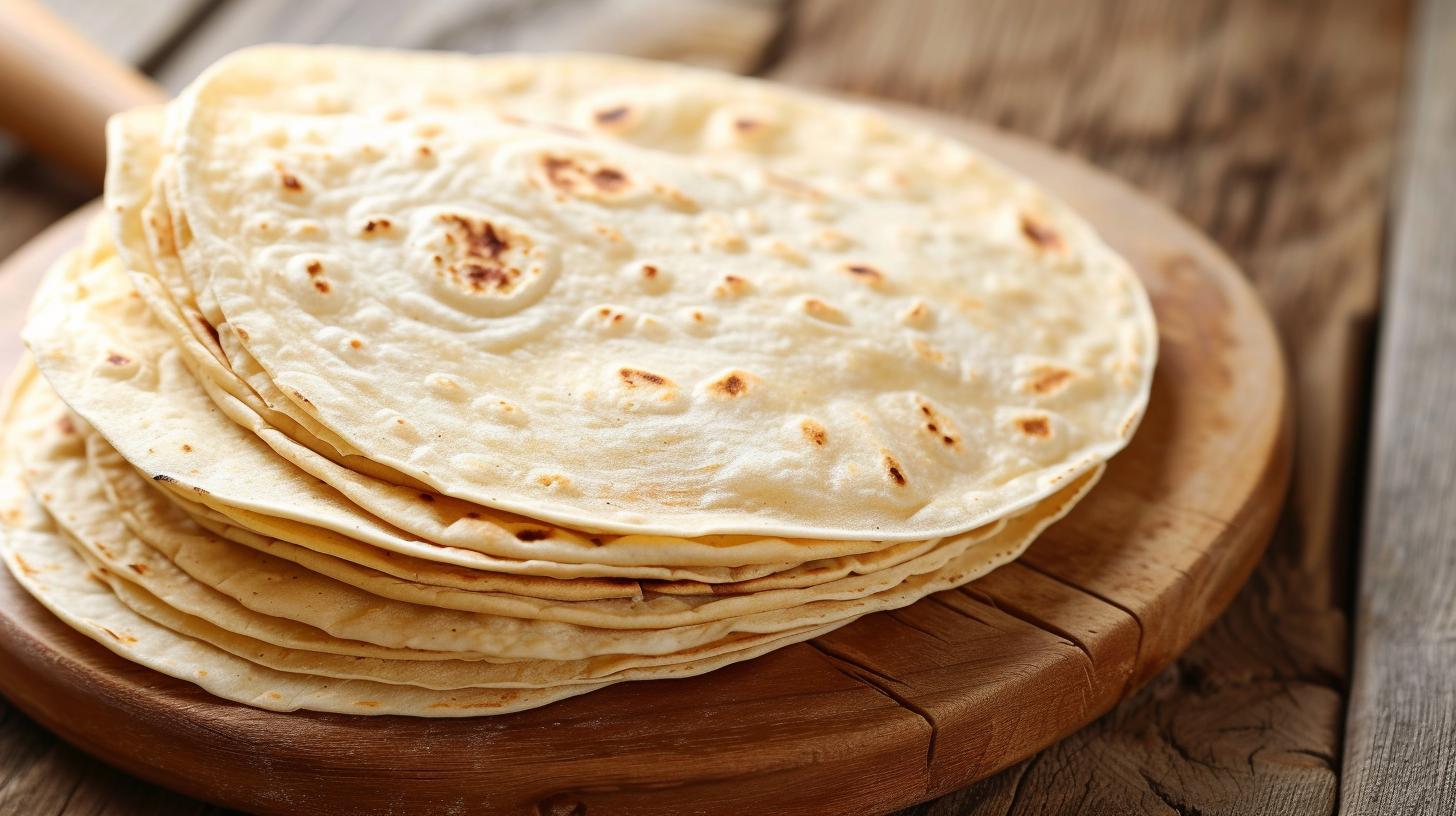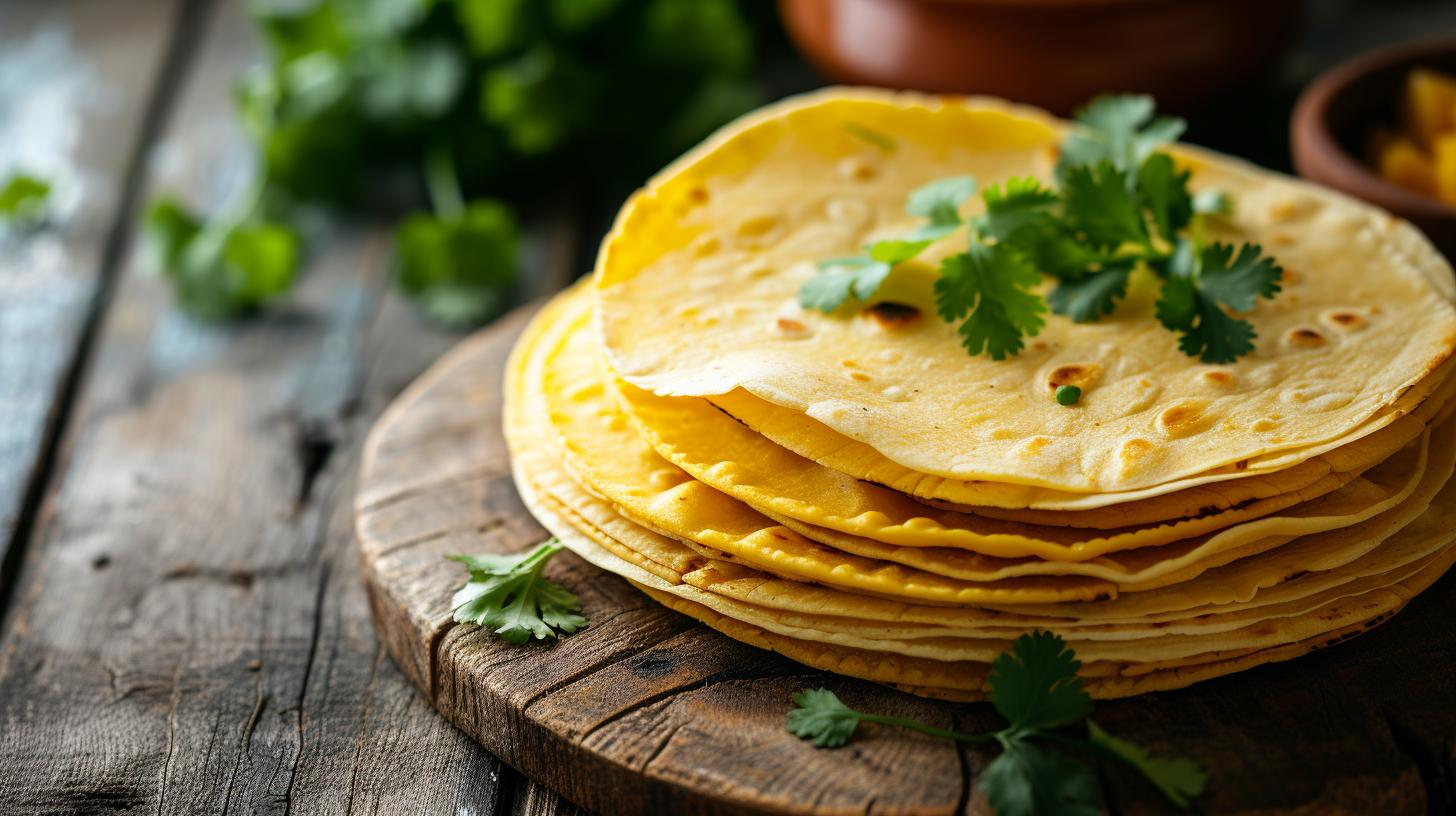Rumali Roti, which translates to “handkerchief bread” in Hindi, is a popular Indian flatbread known for its thin, soft and delicate texture.
In this article, we will explore the history and origin of Rumali Roti, the ingredients needed for making it, step by step instructions on how to make it, tips and tricks for achieving the perfect result, variations and different ways to serve it, the cultural significance of Rumali Roti in Indian cuisine, its health benefits, and common mistakes to avoid when making it.
Rumali Roti is a traditional Indian bread that is often enjoyed with various types of curries or as a standalone dish. Its paper-thin appearance and soft texture make it a unique and versatile addition to any meal. The process of making Rumali Roti involves skillfully stretching the dough until it is thin enough to resemble a handkerchief, hence its name.
The history and origin of Rumali Roti date back to the Mughal era in India. It is believed to have been created in the kitchens of royal Mughal courts where skilled chefs would demonstrate their expertise by preparing this iconic bread. Over time, Rumali Roti has become a beloved part of Indian cuisine and can be found in restaurants and households across the country.
To make Rumali Roti at home, you will need a few simple ingredients that are easily accessible. The key to achieving the perfect texture lies in the technique used to knead and stretch the dough. In the following sections, we will delve into the step by step instructions on how to make Rumali Roti from scratch.
Whether you are an experienced chef or new to Indian cooking, mastering the art of making Rumali Roti can be a rewarding endeavor. With our comprehensive guide, you will learn all you need to know about this iconic flatbread – from its cultural significance to its health benefits – as well as how to avoid common mistakes that may arise during the preparation process. Stay tuned as we take you on a journey through the world of Rumali Roti.
History and Origin of Rumali Roti
Rumali roti, also known as “handkerchief bread”, is a popular Indian flatbread that is both delicious and versatile. Its name, which translates to “cloth bread” in Hindi, comes from the thin and soft texture of the bread, resembling a handkerchief. This section will explore the intriguing history and origin of rumali roti.
Historical Roots
The exact origins of rumali roti are unclear, but it is believed to have originated in the Indian subcontinent, particularly in the Mughal era. The Mughals were known for their lavish feasts and elaborate culinary skills, and it is thought that rumali roti was created as a part of their extravagant cuisine. The thinness and size of the bread made it suitable for serving to royalty and nobility.
Influence of Persian Cuisine
Some food historians suggest that rumali roti might have been influenced by Persian cuisine, particularly due to its resemblance to Persian lavash bread. It is possible that the technique of stretching dough into thin sheets and cooking them on a hot griddle was brought to India by Persian cooks, where it eventually evolved into what we know as rumali roti today.
Popularity and Spread
Over time, rumali roti gained popularity not only in Mughlai cuisine but also across different regions of India. It has become a staple at Indian restaurants both within the country and internationally. The art of making rumali roti has been passed down through generations, with each region adding its own unique touch to the recipe.
The rich history and cultural significance of rumali roti make it more than just a simple flatbread; it represents an important part of Indian culinary heritage. Understanding its origins provides insight into both the evolution of Indian cuisine and the cultural exchange that has shaped it over centuries.
Ingredients Needed for Making Rumali Roti
To make delicious Rumali Roti, you will need the following ingredients:
1. All-purpose flour (Maida) – 2 cups
2. Salt – 1/2 teaspoon
3. Oil or Ghee – 2 tablespoons
4. Water – as needed
5. Butter – for brushing (optional)
6. Chopped Coriander leaves – for garnish (optional)
Now let’s take a closer look at each ingredient and its role in making the perfect Rumali Roti:

All-purpose flour (Maida): This is the primary ingredient used to make Rumali Roti. It provides the base and structure for the dough.
Salt: Just a small amount of salt is used to enhance the flavor of the roti.
Oil or Ghee: Adding oil or ghee to the dough helps in making the roti soft and pliable.
Water: The amount of water needed may vary, but it is essential for kneading the dough to the right consistency.
Butter: While not traditionally used in making Rumali Roti, butter can be brushed on top of the roti after cooking for added flavor.
Chopped Coriander leaves: These are optional but can be added as a garnish for an extra burst of freshness and flavor.
When preparing these ingredients, it’s important to note that using precise measurements and maintaining proper consistency in the dough will greatly affect the outcome of your Rumali Roti.
Remember, a great recipe begins with quality ingredients.
Step by Step Instructions on How to Make Rumali Roti
Rumali roti is a thin, soft, and delicious Indian bread that is a favorite accompaniment to various Indian dishes. It is also known for its unique cooking method, where the dough is stretched and cooked on an inverted griddle. Making rumali roti at home may seem daunting, but with the right technique and practice, you can master this traditional Indian flatbread.
To make rumali roti at home, you will need the following ingredients:
- 2 cups of all-purpose flour
- 1/2 teaspoon of salt
- 1 tablespoon of ghee or oil
- Water as needed for kneading the dough
- Extra flour for rolling out the rotis
- Ghee for brushing the cooked rotis
Here is a step by step guide on how to make rumali roti:
- In a large mixing bowl, combine the all-purpose flour and salt. Gradually add water and knead into a smooth and soft dough.
- Divide the dough into small lime-sized balls and roll them into smooth balls. Let them rest for 15-20 minutes.
- Heat a tawa or griddle over medium-high heat.
- Take one of the dough balls and roll it out on a clean work surface using some dry flour until it becomes very thin like a handkerchief (rumal in Hindi).
- Carefully transfer the rolled-out dough onto the hot tawa or griddle and cook for about 30 seconds on one side.
- Using tongs, carefully flip the roti onto the other side and cook for another 30 seconds.
- Once both sides are cooked, remove from heat and brush with ghee.
Tips for making perfect rumali roti include keeping the dough soft but not sticky, rolling it out very thin, ensuring your griddle is hot enough, and brushing with ghee immediately after cooking.
Overall, making rumali roti at home can be an enjoyable process that allows you to create delicious Indian flatbread from scratch.
| Ingredient | Quantity |
|---|---|
| All-purpose flour | 2 cups |
| Salt | 1/2 teaspoon |
| Ghee or oil | 1 tablespoon |
Tips and Tricks for Making the Perfect Rumali Roti
Making the perfect Rumali Roti requires some special techniques and attention to detail. Here are some tips and tricks to help you master the art of creating this delicate and thin Indian flatbread:
1. Use the Right Type of Flour: The key to getting a soft and thin Rumali Roti lies in using the right type of flour. Traditional recipes call for a combination of whole wheat flour and all-purpose flour. This combination gives the roti its unique texture and flavor.
2. Kneading the Dough: When making the dough for Rumali Roti, it’s important to knead it thoroughly until it becomes smooth and elastic. This will ensure that the roti turns out soft and pliable.
3. Resting the Dough: After kneading the dough, allow it to rest for at least 30 minutes. This resting period allows the gluten to relax, making it easier to roll out the roti into thin sheets.

4. Rolling Technique: The key to getting thin and translucent Rumali Roti is in how you roll it out. Instead of using a rolling pin, try using your hands to stretch and spread out the dough on a flat surface. The roti should be so thin that you can almost see through it.
5. Cooking Method: Traditionally, Rumali Roti is cooked on an inverted wok or tava, which allows it to puff up when exposed directly to high heat. It should only take a few seconds on each side for the roti to cook properly.
By following these tips and tricks, you’ll be able to create perfect Rumali Roti every time, allowing you to enjoy this delicious Indian bread with your favorite curries and dishes.
Variations and Different Ways to Serve Rumali Roti
Rumali roti, also known as “handkerchief bread,” is a popular Indian flatbread known for its thin and delicate texture. In addition to being a versatile staple in Indian cuisine, rumali roti can also be served in various ways and can be made with different variations to complement different dishes.
Variations of Rumali Roti
One of the most common variations of rumali roti is the use of whole wheat flour instead of all-purpose flour. This healthier alternative adds a nutty flavor and a slightly chewier texture to the roti, making it an excellent choice for those looking to incorporate more whole grains into their diet. Another variation involves adding herbs or spices directly into the dough, such as chopped cilantro, cumin seeds, or even garlic powder, to infuse additional flavors into the roti.
Different Ways to Serve Rumali Roti
Rumali roti can be served in various ways depending on personal preference and accompanying dishes. One popular method is to simply fold or tear the roti into smaller pieces and use it as a utensil to scoop up flavorful curries, dals, or chutneys. The soft and thin texture of rumali roti makes it an ideal companion for rich and saucy dishes, allowing diners to fully savor the flavors without overpowering them with heavy bread.
Another creative way to serve rumali roti is by using it as a wrap for kebabs or grilled meats. The delicate nature of the bread allows it to be rolled up easily without breaking, making it perfect for encasing flavorful fillings. Additionally, torn up pieces of rumali roti can be toasted with butter and savory spices to create crispy and addictive snack bites that pair well with dips or spreads.
For those with a sweet tooth, rumali roti can also be used as a base for desserts such as fruit chaat or layered with sweetened condensed milk and nuts for a decadent treat. The versatility of this flatbread opens up endless possibilities for serving it in both savory and sweet applications.
With its ability to adapt to different flavors and serving styles, rumali roti remains a beloved dish that continues to inspire creativity in Indian cuisine.
Overall, whether enjoyed on its own as a side dish or incorporated into a variety of recipes, rumali roti holds cultural significance in Indian cuisine while offering an array of options for chefs seeking new culinary experiences.
The Cultural Significance of Rumali Roti in Indian Cuisine
Rumali roti holds a special place in the heart of Indian cuisine, not just for its delicious taste and versatility, but also for its cultural significance. This traditional flatbread is not only a staple in Indian households, but it also plays an important role in various cultural and religious ceremonies and events.
In India, sharing a meal holds great importance and is considered a way of connecting with others. Rumali roti, with its large, thin, and delicate texture, symbolizes the idea of sharing and togetherness. It is often served at social gatherings, weddings, and festivals as a way of bringing people together over a shared love for food.
Furthermore, rumali roti has historical roots that date back to the Mughal era in India. It is believed that this paper-thin bread was invented by the royal chefs to please the Mughal emperors who were known for their love of rich and flavorful food. Today, it serves as a reminder of India’s rich culinary heritage and the influence of Mughal cuisine on Indian cooking.

Another aspect of rumali roti’s cultural significance lies in its preparation process. Making these thin rotis requires skillful dough handling and delicate techniques such as flipping and stretching the dough until it resembles a handkerchief or ‘rumal’ (in Hindi), which is where its name originates from. This intricate process has been passed down through generations and represents the artistry and craftsmanship involved in Indian cooking.
Moreover, rumali roti is often paired with traditional Indian dishes such as kebabs, curries, and dals. Its light texture and ability to wrap around various fillings make it an essential accompaniment to many beloved Indian recipes. This association with classic Indian dishes further cements rumali roti’s role in representing the diversity and richness of Indian culinary traditions.
| Aspect | Detail |
|---|---|
| Cultural Importance | Rumali roti symbolizes sharing meals and togetherness at social gatherings. |
| Historical Roots | Invented during Mughal era; reflects India’s culinary heritage. |
| Preparation Process | Requires skillful dough handling; represents artistry in cooking. |
| Pairing with Dishes | Essential accompaniment to kebabs, curries, dals; reflects diverse Indian cuisine. |
Health Benefits of Rumali Roti
Rumali Roti, a traditional Indian flatbread, not only delights the taste buds but also offers several health benefits. This section will delve into the nutritional value of Rumali Roti and how it can contribute to a well-balanced diet.
One of the key health benefits of Rumali Roti is its high fiber content. Made from whole wheat flour, this flatbread is an excellent source of dietary fiber, which aids in digestion and helps prevent constipation. Fiber also plays a crucial role in maintaining a healthy weight and reducing the risk of developing chronic diseases such as heart disease and diabetes.
Additionally, Rumali Roti is low in calories and fat compared to other types of bread, making it a healthier alternative for those aiming to manage their weight. The absence of saturated fats in its preparation further adds to its appeal as a nutritious food option.
Furthermore, the use of whole wheat flour in Rumali Roti provides essential nutrients such as protein, B-vitamins, and minerals like iron and magnesium. These nutrients are vital for overall good health, supporting energy production, immune function, and red blood cell formation.
For individuals with gluten sensitivities or allergies, there are variations of Rumali Roti that can be made using alternative flours such as chickpea flour or millet flour. This allows those with dietary restrictions to still enjoy the cultural experience of eating Rumali Roti.
Common Mistakes to Avoid When Making Rumali Roti
In conclusion, mastering the art of making Rumali Roti can be a rewarding and fulfilling experience. By understanding its history, learning the proper ingredients and techniques, and avoiding common mistakes, anyone can create this delicate and delicious Indian flatbread at home.
Rumali Roti holds a special place in Indian cuisine, not only for its unique texture and flavor but also for its cultural significance. It is often served at weddings, festivals, and other special occasions, making it an important part of Indian culinary traditions.
As with any culinary endeavor, there are potential pitfalls to avoid when making Rumali Roti. One common mistake is overkneading the dough, which can result in tough and chewy bread instead of the desired soft and thin texture. Another mistake to avoid is using too much flour while rolling out the dough, as this can make the roti thick and heavy instead of light and airy.
Additionally, it’s important to ensure that the skillet or tawa is well-heated before cooking the Rumali Roti to achieve those characteristic brown spots on the surface. Overcooking can lead to a stiff and brittle roti rather than the desired softness.
To truly appreciate the beauty of Rumali Roti, one must understand its versatility. Whether served alongside rich curries or filled with savory fillings like kebabs, there are endless ways to enjoy this cherished flatbread.

